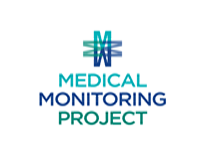Medical Monitoring Project (MMP)
 About MMP
About MMP
Welcome to the Medical Monitoring Project website. The Medical Monitoring Project (MMP) is a surveillance system designed to learn more about the experiences and needs of people who are living with HIV. It is supported by several government agencies and conducted by state and local health departments along with the Centers for Disease Control and Prevention (CDC).
By collecting locally and nationally representative behavioral and medical record data from people living with HIV, MMP will help answer the following questions:
- How many people living with HIV are receiving medical care for HIV?
- How easy is it to access medical care, prevention, and support services?
- What are the met and unmet needs of people living with HIV?
- How is treatment affecting people living with HIV?
To improve the usefulness of MMP data, in 2015 MMP was expanded to include people living with HIV who are not receiving medical care. This information can be used to guide policy and funding decisions aimed at increasing engagement in care and improving quality of care for people living with HIV throughout the United States.
Importance/Significance
MMP is important because it provides information about the behaviors, medical care, and health status of people living with HIV.
MMP is unique in that it describes comprehensive clinical and behavioral information from persons carefully sampled to represent everyone diagnosed with HIV in the United States. Because MMP’s estimates are designed to be representative, information gathered from MMP may be used by prevention planning groups, policy leaders, health care providers, and people living with HIV to highlight disparities in care and services and advocate for needed resources.
Sampling Overview
From 2005-2014, MMP sampled persons from HIV care facilities, so only people receiving HIV medical care were included in the project. Starting in 2015, MMP introduced a new sampling method to include all adults diagnosed with HIV in the United States. This is accomplished using a two stage sampling strategy.
First Stage: State Level
 All 50 states, the District of Columbia and Puerto Rico were eligible for inclusion in MMP.
All 50 states, the District of Columbia and Puerto Rico were eligible for inclusion in MMP.
A sample of states was based on the number of AIDS cases within each area. A total of 16 states and 1 U.S. territory were selected.
Second Stage: Person Level
 A sample of about 400 HIV infected individuals from each area is selected each year from the National HIV Surveillance System. These individuals must be at least 18 years old and diagnosed with HIV. People who are selected are asked to participate in an interview during which they answer questions about their behavior and HIV medical care. They also give the MMP project staff permission to review their medical chart.
A sample of about 400 HIV infected individuals from each area is selected each year from the National HIV Surveillance System. These individuals must be at least 18 years old and diagnosed with HIV. People who are selected are asked to participate in an interview during which they answer questions about their behavior and HIV medical care. They also give the MMP project staff permission to review their medical chart.
Sampled people’s participation is very important – those who participate represent HIV-positive individuals like them who were not selected to participate.
Confidentiality
MMP project staff follow strict protocols to ensure participants’ confidentiality. All information collected is kept confidential including patient and healthcare facility names. Names of selected people and facilities are NOT sent to CDC and will NOT be used in any reports.
- Page last reviewed: February 23, 2015
- Page last updated: March 19, 2015
- Content source: Division of HIV/AIDS Prevention, National Center for HIV/AIDS, Viral Hepatitis, STD, and TB Prevention, Centers for Disease Control and Prevention


 ShareCompartir
ShareCompartir